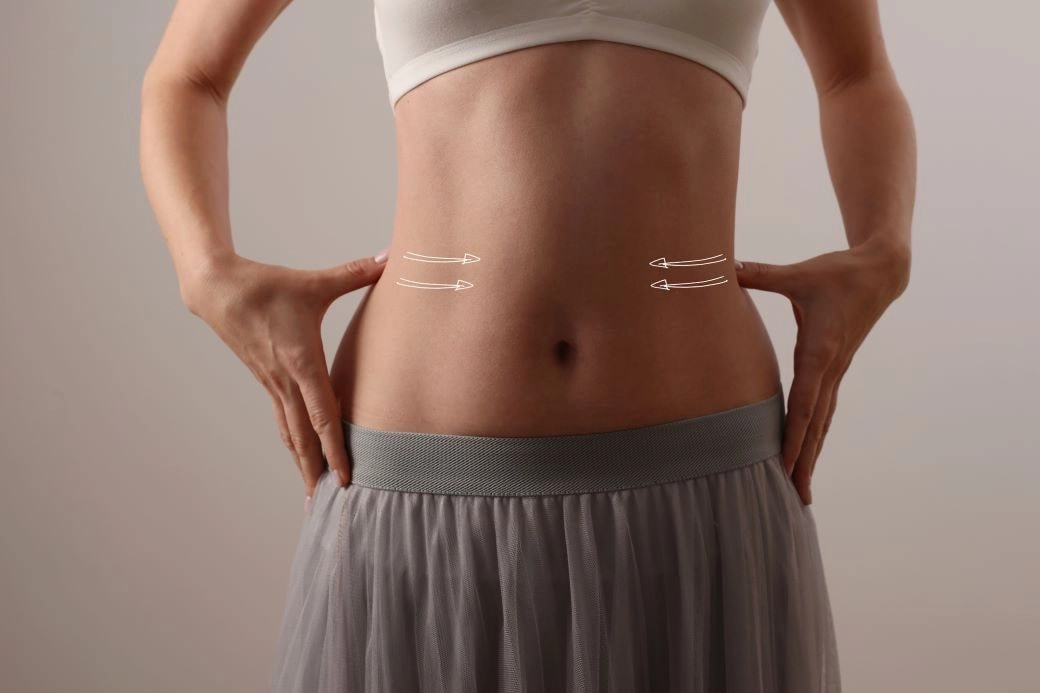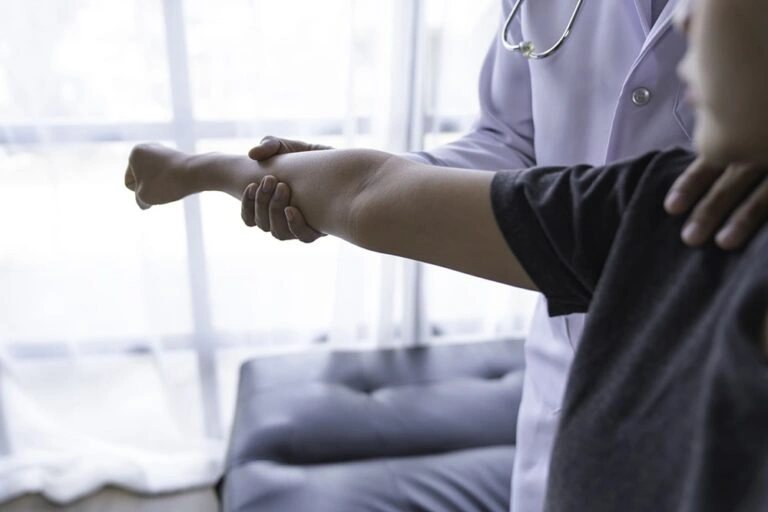Many people think that one of their legs is shorter than the other or that they have scoliosis when what they really have is misaligned hips. It can be difficult to tell the difference between these things unless you know what to look for.
Hip misalignment symptoms include hip pain on one or both sides, tight leg and butt muscles on one side, back pain (upper and lower), sciatica, ankle pain, and knee pain. While there can be other symptoms, these are the most common ones that come along with misaligned hips.
What Causes Your Hips to Go Out of Alignment?
There are several reasons your hips can go out of alignment. They are scoliosis, functional leg length discrepancy, and physical leg length discrepancy.
Scoliosis and Uneven Hips
Many people automatically think of scoliosis when they suspect misaligned hips. But scoliosis is only one cause of hip misalignment. And it’s not likely that you have scoliosis if you’re an adult who hasn’t previously been diagnosed with the condition.
If you have a child you think has a misaligned hip, you may want to take them to get tested for scoliosis just to be safe. Most children who have this condition will grow out of it, but they still need to be monitored by a medical professional.
Functional Leg Length Discrepancy
More likely, your hip misalignment is what we call a functional leg length discrepancy. This means that your legs are actually the same length, but you’re doing something to cause your hips to misalign. It usually comes down to how you stand, walk, and your posture that could create this functional leg length discrepancy.
Physical Leg Length Discrepancy
When your legs are actually different lengths, this can cause your hips to become misaligned. Most cases are remedied by wearing a wedge in your shoe. However, some more serious cases where the difference is significant may require surgery. However, if you’re an adult and you’ve only just noticed your hip misalignment, it’s likely a functional issue rather than a physical one.
Can Hip Alignment Cause Back Pain?
When you think about how the body’s systems work together, you won’t be surprised to learn that hip misalignment can cause back pain. This happens because misaligned hips can pull the back out of alignment, which can cause all sorts of problems, including herniated discs, sciatica, muscle spasms, and stressed soft tissue.
Many people are surprised to learn that their sciatica is directly tied to a hip misalignment that they didn’t even know they had. The same goes for people who have lower back pain, thinking they did something to their back when really it’s their hips that are to blame.
In fact, one study found that range of motion and the prevalence of osteoarthritis in the hips were both contributors to spinal misalignment. This goes to show that taking care of the hips along with the spine is important for the long-term health of both.
Symptoms of Misaligned Pelvis
If you’re suffering from hip pain, back pain, or simply think you have misaligned hips, you’ll want to look for these symptoms.
- Hip pain
- Back pain – Lower back pain is most common, but upper back pain is possible
- Pain in the knee, ankle, and/or foot
- Sciatica
- Tightness or limited range of motion in one or both hips
- Uneven shoulders
- Uneven gait
Of course, there are other things that can cause the symptoms above. Misaligned hips isn’t the only cause of pain or tightness in these areas. This is why it’s a good idea to perform the hip misalignment test detailed below.
Hip Alignment Test
There’s a simple way you can get a good idea whether your hips are misaligned. This is intended for information purposes only. You should see a chiropractor or physician for a professional diagnosis.
- Get into your bare feet
- Grab a piece of yarn, string, or a shoelace (should be 12-inches or longer)
- Stand in front of a mirror, one end of the string held in each hand
- Place the heel of each hand against your hip bones on either side
- Look at the string in the mirror to see if it is tilted
If you have any of the symptoms above and you see a tilted string on the hip alignment test, you likely have a misalignment. You may also feel that one of your hips needs to “pop.” This feeling doesn’t necessarily mean that your hips are misaligned, but you can try to pop your hips if it doesn’t cause you pain.
Hip Misalignment Treatment Options
Hip misalignments can be tricky to correct by yourself. Although there are some exercises you can do at home, it’s important to have your hips, posture, and gait analyzed by a professional so you can learn what is causing the misalignment. Studies show that chiropractors can help increase hip joint extension, which can help keep the hips healthy and moving well. This is just one reason why hip adjustments are ideal for those with misaligned hips.
Hip Adjustment
Chiropractic adjustments aren’t just done to one area of the body. While the most common adjustments are performed on the spine, it’s common for chiropractors to adjust the lower back and hips regularly. As mentioned earlier, these two components work closely, and misalignment in one can affect the other.
One study published in 2010 found that chiropractic care helped reduce hip pain in those with hip osteoarthritis. The patients found an increase in their quality of life thanks to the chiropractic care and the pain reduction techniques used.
Another study details the treatment of two middle-aged women with congenital hip dislocation. The conservative treatment options, including manipulation and spinal stabilization, were effective in managing pain and other symptoms created by hip problems. Numerous scientific journals prove that chiropractic works.
Exercises
While seeing a chiropractor is the best and safest form of treatment for hip misalignment, you can also try certain exercises at home to see if they help. Chiropractors work closely with physical therapists to give you exercises to do at home, but you can try the ones listed here if you’re hesitant to head to the chiropractor’s office.
- Seated Hip Stretch
- Side Lunge
- Standing Reverse Leg Raises
- 90/90 Hip Stretch
Be careful when you try these stretches. If any of the movements cause you pain, stop immediately. You may experience discomfort, but pain is an indication that something is wrong and you should cease that exercise.
Hip Misalignment Symptoms and Treatment: Conclusion
Hip misalignment can come about for many reasons. Most people experience occasional misalignments because of habits they’ve developed when sitting, standing, or walking. Luckily, these causes are fairly easy to correct with the help of a professional chiropractor or physical therapist. Through adjustments, exercises, changes in habits, and strengthening workouts, you can say goodbye to your hip pain and misalignment for good!
Resources:
https://journals.sagepub.com/doi/full/10.1177/1120700018803236
https://www.sciencedirect.com/science/article/abs/pii/S0899346708000311
https://www.sciencedirect.com/science/article/abs/pii/S0161475410001533
https://www.sciencedirect.com/science/article/abs/pii/S0161475404000417









